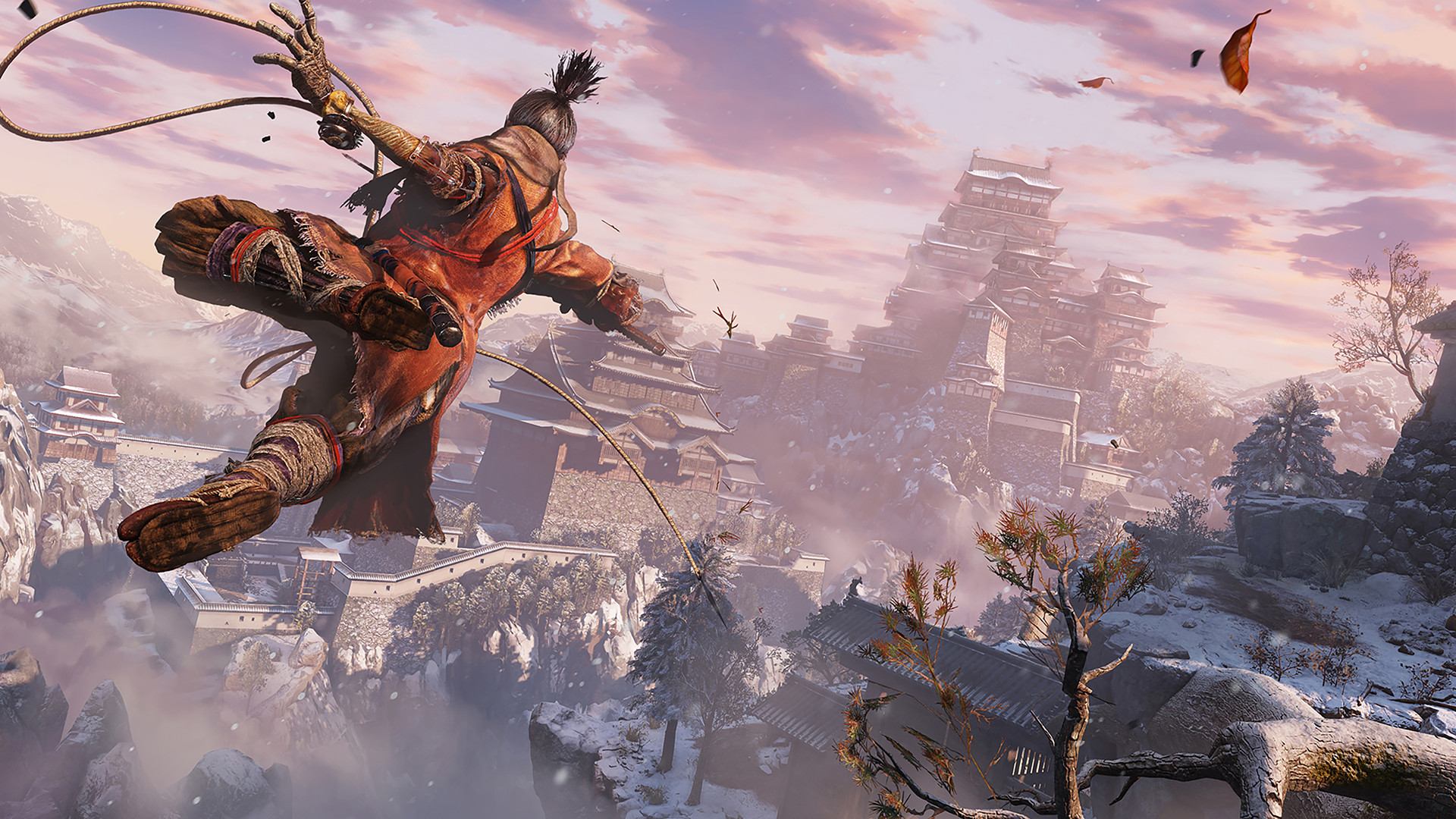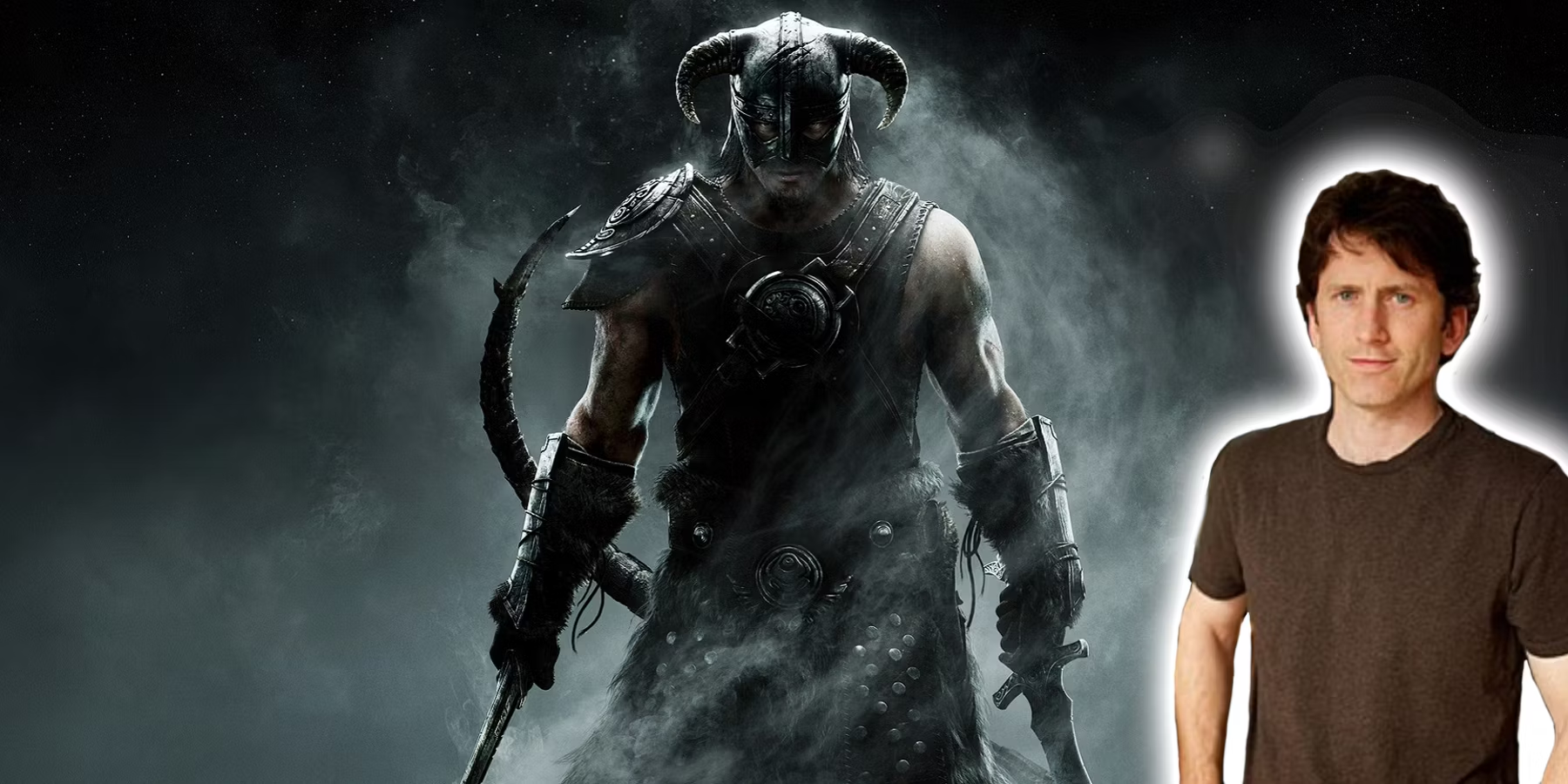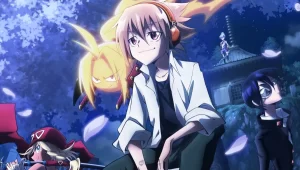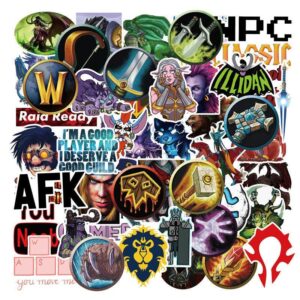Slowly fighting my way through a feudal Japanese castle, I’ve challenged and beaten many enemies. Some tested my ability to be aggressive; others tested my ability to deflect and dodge. A brief reprieve is granted before I ascend to the very rooftop of the building, where my most difficult challenge yet awaits me. A snowy Mt. Fuji looms in the distance as I’m stared down by one of the major bosses of Sekiro: Shadows Die Twice. Our swords clash in a battle of attrition. After numerous attempts of slashing, dodging, parrying, deflecting, and of course, dying, victory is finally mine. Or so I thought. One last phase, one last challenge, awaits me before I am granted the absolutely cathartic yet only temporary rush of victory.
This is the loop of Sekiro: Shadows Die Twice, and I can’t get enough of it.
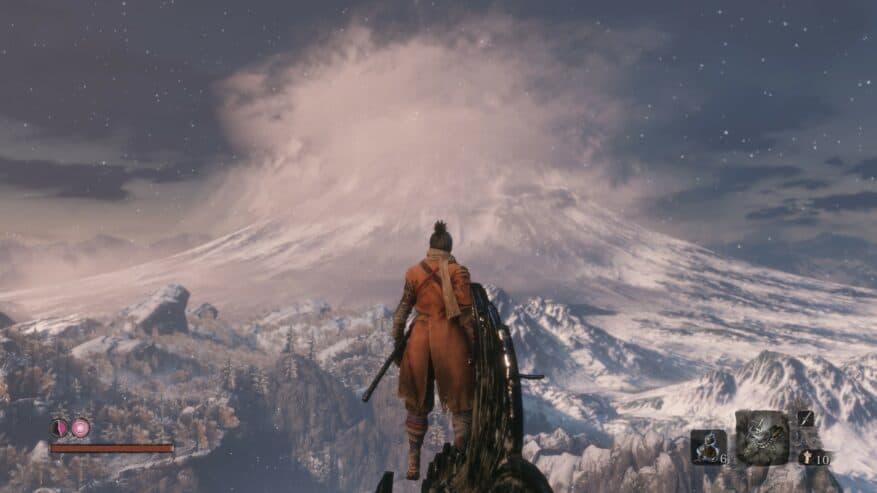
Mobility Is Power
Level design-wise, Sekiro feels very similar to previous Soulsborne games, with a significant twist: verticality.
One of the most fundamental functions of the “Shinobi Prosthetic” is the grappling hook, which allows the player to ascend to various places for various reasons. Sometimes in the name of stealth, others in the name of progression. Players are made aware of points they can grapple to via UI prompts. There’s really no slant of difficulty to these, outside of sometimes needing to jump to get in range of a grapple point.
However, the first pain point of Sekiro is reached here. I found the grappling hook system to be spotty at best, not always functioning the way it should. I.E: not being able to grapple to a point that I know, based on past prompts, that it can be. There’s no explanation outside of the system that doesn’t work correctly.
This isn’t necessarily game-breaking per se, but it can be frustrating when it occasionally happens.
Edge Trigger
Speaking more about the movement in Sekiro, another departure from Soulsborne is the mobility granted while jumping. Players have plenty of opportunities to jump up and over or onto walls, occasionally needing an edge to hang to reach the desired location. However, once again, this system functions weirdly for me as well.
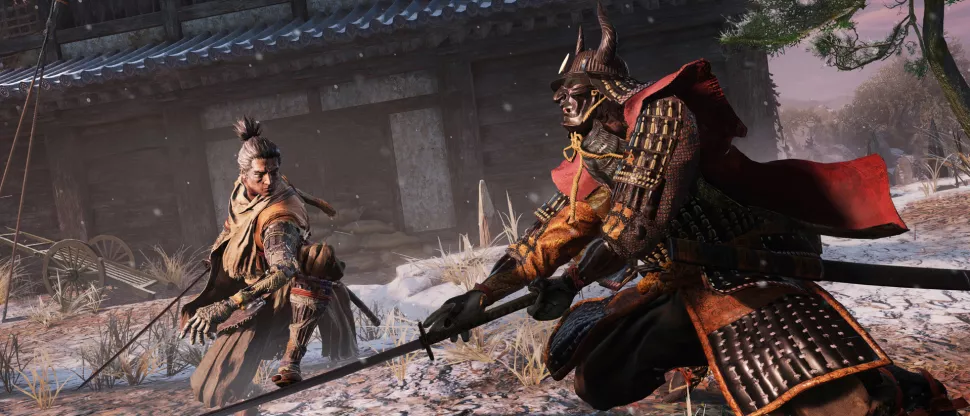
As edge hanging is a separate action and control, even holding down the button for the action doesn’t work, requiring players to press the button at the right time in order to edge hang or ledge grab. This seems completely unnecessary as a step and should have been automated, at the most, or at the very least, a lot more forgiving than it exists in-game.
Furthermore, Sekiro occasionally comes off as unclear as to what walls or ledges can be climbed up or grabbed. Some particularly tall walls require not only the little boost wall climbing gets you but also a ledge grab. It’s somewhat challenging to determine whether or not you can’t climb that wall because the developers didn’t intend that wall to be climbed or you’re mistiming the edge grab.
The added mobility and verticality aspects of Sekiro, although great concepts, don’t function as well as they should. Although this doesn’t excuse it, makes a bit of sense, considering this is FromSoftware’s first attempt at having such systems in place.
Technical Beauty
Graphically, Sekiro doesn’t really exhibit anything to write home about. There’s no new graphics technology here that’s groundbreaking. It’s reminiscent of 2016’s Dark Souls 3, so much so that I recognized several reused assets that seemed directly taken from Dark Souls 3. However, this didn’t seem like a problem, as not only does Dark Souls 3 hold up very well in 2019, Sekiro succeeds stylistically.
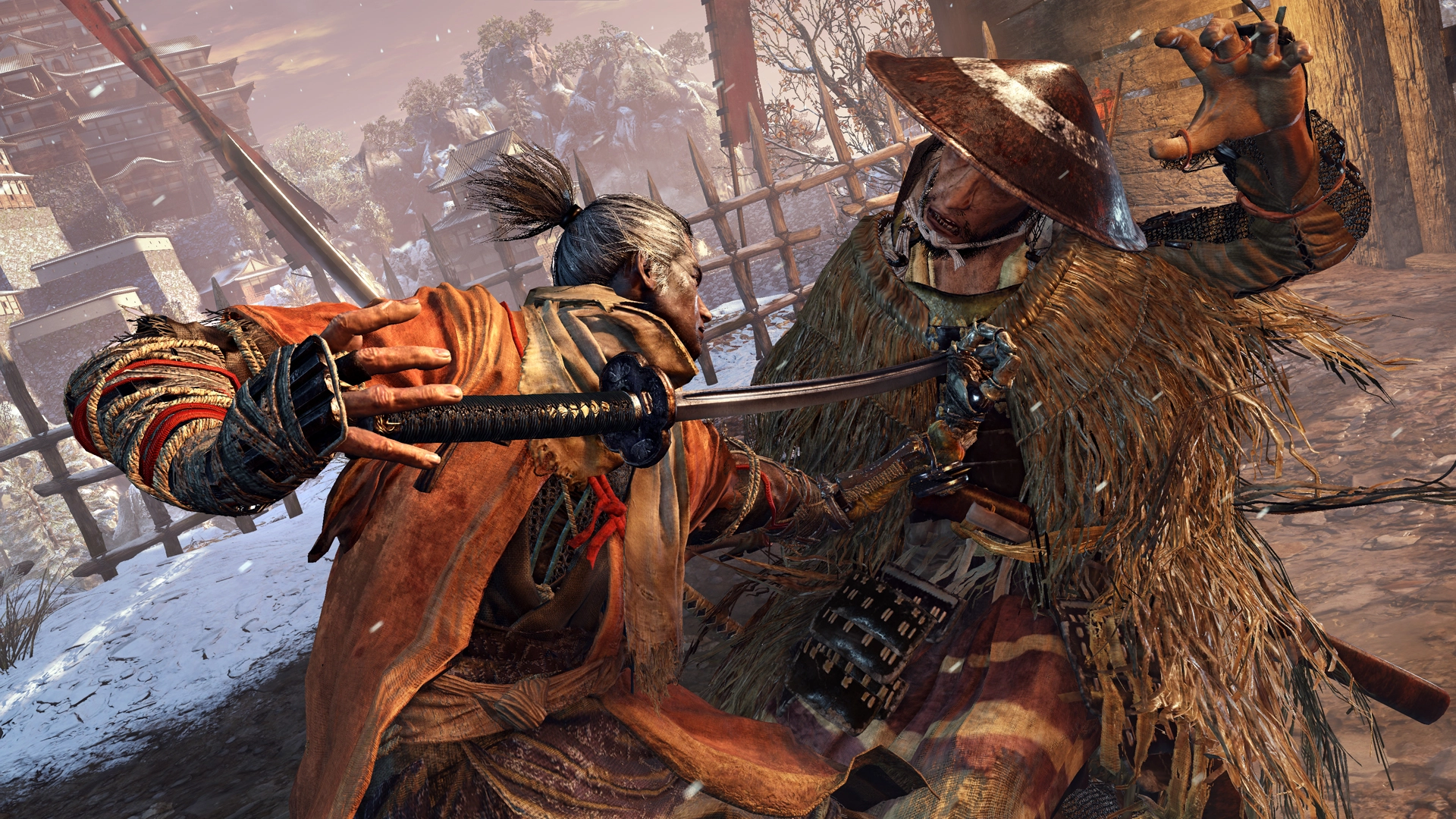
FromSoftware departed from the medieval European style of Dark Souls, or Victorian style Bloodborne, and arrived at a feudal Japanese style for Sekiro. The result is a beautifully drawn and populated landscape that feels reminiscent of their past games, but simultaneously different enough to distinguish itself as a brand-new setting.
The color pallet is perhaps the most essential aspect. The world of Sekiro is filled with color, as opposed to the grey that dominated Soulsborne.
The color pallet is perhaps the most essential aspect. The world of Sekiro is filled with color, as opposed to the grey that dominated Soulsborne. The muted castle walls and buildings are contrasted with the bright and vibrantly colored landscape, lighting, and characters. FromSoftware took their desired style and ran with it, and it’s very apparent in-game.
The art style, coupled with the of course, exceedingly Japanese soundtrack, provides an intense world for the player to experience. The fights wouldn’t quite feel the same if they didn’t have the rapid and furious soundtrack to back them up.
Despite not being graphically superior technically, it is through style and design that Sekiro shines, and achieves a high level of fidelity.

Narrative Direction
Sekiro differs from Soulsborne in the narrative in several essential ways.
For starters, you play as a set character with set goals and motivations, as well as already set and established inter-character relationships. Furthermore, the overall story of Sekiro is told in a much more direct manner than in Soulsborne, yet Sekiro still leaves a lot of the more profound world history in details to the item descriptions, something reminiscent of past titles. The story is about as passable as the “stories” of Soulsborne, but again much like the other games, enjoyment of the story in Sekiro more comes from the deeper lore hinted at and discoverable in the surrounding world.
Similar, But Different
If Dark Souls and Bloodborne are like brothers then Sekiro is like a cousin to the family. Experienced Soulsborne players will feel a sense of familiarity with Sekiro, but will have to acknowledge and respect the changes it brings to the formula to succeed and enjoy the experience. Even if you’ve been turned off of previous Soulsborne titles, Sekiro is different enough to warrant another try, as you have to approach and play Sekiro very differently than you would Soulsborne.

Difficulty-wise, I would have to judge Sekiro as more difficult overall than Soulsborne. Sekiro has a different type of difficulty to it, once again distinguishing itself. Despite the resurrection mechanic and despite the somewhat reduced death penalties, Sekiro is more difficult because of how it coerces you into learning how your enemies fight and adopting the specific style needed to counter. Sekiro is less “dodge when you see the enemy do this”, and more “If the enemy does ‘X’, you must do ‘Y’”.
Even if you’ve been turned off of previous Soulsborne titles, Sekiro is different enough to warrant another try.
My final contentious point regarding Sekiro is the replayability factor. Unlike Dark Souls, there aren’t many different weapons or class builds to experiment with in Sekiro, nor is there multiplayer. Sekiro sheds all of that off and only keeps a New Game Plus feature. Because of this, I don’t personally see myself sinking hundreds of hours into Sekiro like I have Dark Souls 3.
Past that, what you get with Sekiro is an intense gameplay experience, that you will only succeed in by thinking critically and actively trying to become better at. Sekiro is a more than worthy addition to FromSoftware’s catalog, and if you have even a fleeting interest in it, I cannot recommend Sekiro enough.
If you like anime, be sure to check out my article on Sword Art Online and Futurism here. And be sure to check out other reviews on OpenCritic.
Summary
Sekiro: Shadows Die Twice is a fantastic game, that both previous and newcomers to the game’s style will be able to hop in and enjoy. The game is marked for it’s intense combat, strategic thinking, and beautiful world design, while only suffering from some minor polishing issues as well as a questionable amount of replayability.
Overall
90%Pros
- Intense, tight controlling combat
- Engaging progression and customizability
- Beautiful music and graphical style
- Narrative that strikes balance between direct and indirect
- A challenge that always feels fair, and rewards players for succeeding
Cons
- Vertical mobility elements lack fine polish
- Questionable replayability factor




